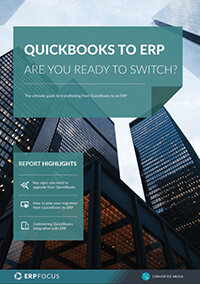Changing ERP Systems: Part One - An Overview
There are many reasons you might be considering changing your ERP system. Perhaps you have been acquired, or merged, and the decision has been made to standardize on one particular ERP package. Maybe you are interested in a different technology stack and an ERP change cascades from that decision. Possibly your business model has changed drastically, and your ERP system no longer supports your strategic plan. These would be positive reasons to replace an existing ERP system. There are negative ones, as well. It could be your ERP vendor no longer exists, or has fallen hopelessly behind in development. It could also be that you made poor choice years ago, and the organization cannot afford to live with the bad fit any longer.
Likewise, the ERP change you are considering may vary a lot in degree, from changing to a newer release of your current vendor’s software to replacing your ERP system with a different vendor’s package. You should exercise extreme due diligence, because you understand fully that (a) nothing gives a vendor more to crow about in the marketplace than to be able to say “They had to take out their {competitor’s} system and replace it with ours!” and (b) as the potential for new ERP implementation sales gets smaller and smaller, the natural fallback position is to generate revenue growth by creating demand for replacement systems.
The Same, but Different
If you decide to replace your ERP system, the effort and resource requirements will be different than the first time. You will not need to spend nearly as much time on change management efforts, since your end-users already understand an integrated software system. Likewise, you shouldn’t be dependent on as many ERP consultants, since you understand the process. However, the effort for the tactical details of the implementation - configuration, data migration, testing, and end-user training - will require the same amount of effort as the original. The new organizational risk to guard against is overconfidence; having had a successful implementation once in the past is not an automatic guarantee of another in the future. The fear level that stopped just short of mass hysteria during the first ERP implementation was a huge motivator.
Finally, this is the time to take a hard look at your overall IT strategy. You should consciously decide if this is the time to outsource and go to cloud ERP computing. You need a plan for all of the customization you’ve created. You need to decide whether you want to continue to make use of whatever sunk cost hardware assets you have, or whether you need to go a different direction. You need to plan for a smooth transition of business information availability.
Replacing an ERP system is just like any other business decision. It should be widely agreed that replacement will help the organization make more money than sticking with what you have. In order to reach that wide agreement, you will need a solid project plan, and be able to articulate the benefits of your new direction.
Free white paper

ERP Implementation: 9 steps to success
The 9 proven steps you should follow when implementing ERP

Featured white papers
-

Quickbooks to ERP: Are You Ready to Switch?
Get the definitive guide to converting your business from Quickbooks to ERP
Download
Related articles
-

Making you think: The struggle of changing habits
How to handle changing your employees' system habits when implementing a new ERP
-

CMMC Compliance: What Aerospace and Defense Manufacturers Need to Know
Key insights on CMMC compliance, deadlines, and securing DoD contracts with CMMC 2.0 certificatio...
-

Digital transformation or ERP transformation?
What is digital transformation and how does it relate to ERP?

